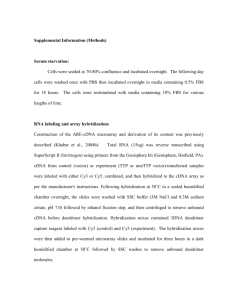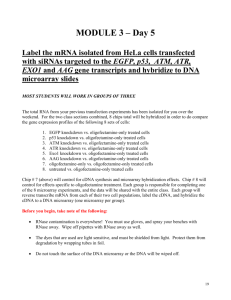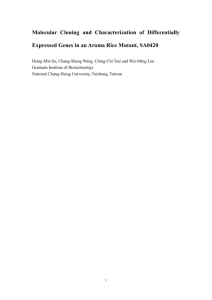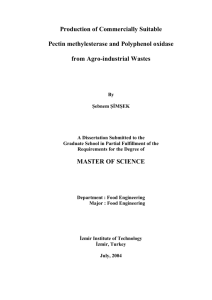note - Informatics
advertisement
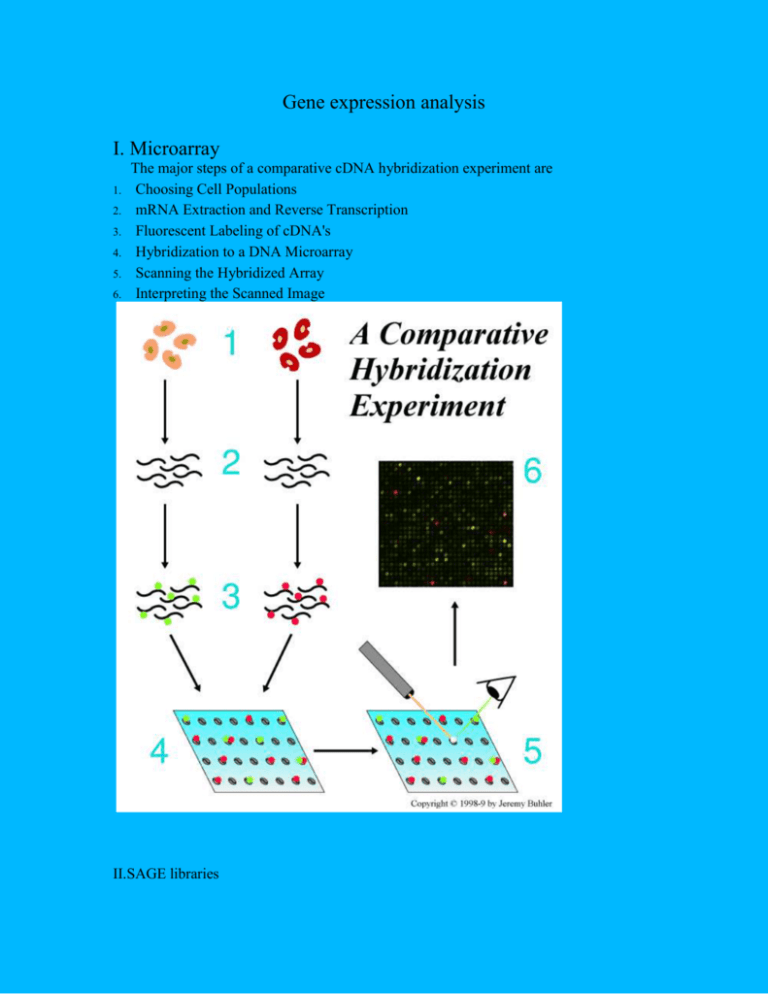
Gene expression analysis I. Microarray 1. 2. 3. 4. 5. 6. The major steps of a comparative cDNA hybridization experiment are Choosing Cell Populations mRNA Extraction and Reverse Transcription Fluorescent Labeling of cDNA's Hybridization to a DNA Microarray Scanning the Hybridized Array Interpreting the Scanned Image II.SAGE libraries 1. 2. 3. The restriction enzyme Nla III, "anchoring enzyme" (AE), cleaves at the sequence 5'CATG, leaving a four nucleotide 3' overhang. Biotinylated fragments are isolated using streptavidin beads. Divide in half and ligate to linkers A or B. The linkers contain unique primer binding sites, the recognition sequence (5'-GGGAC) for a tagging enzyme (TE), in this case BsmFI, and an Nla III compatible sticky end. Cleave with BsmFI tagging enzyme (TE) and blunt-end-fill in. The enzyme BsmFI 4. 5. cuts 10 and 14 bases in the 3' direction from its recognition site, thus adding the "Tag" sequence to the linkers. Ligation and amplification using primers A and B. Restriction with anchoring enzyme, isolation of ditags, concatenate and clone. X and O represent nucleotides from different transcripts. III. EST sequencing 1. 2. 3. 4. 5. Generation of cDNA libraries Sequencing from the 5'-, the 3'- or both ends Average read length of 600 to 800 bases after quality clipping Professional clustering and assembly Scientific consultancy and project planning by sequencing experts IV.Differential display 1.RNA extraction and qualification 2.DNase treatment of RNA sample 3.Reverse transcription 4.PCR amplification 5.Separation on acrylamide gels 6.DNA extraction from bands of interest 7.Re-amplification by PCR 8.Separation on agarose gels 9.Excision of amplified products V. Subtractive hybridization








